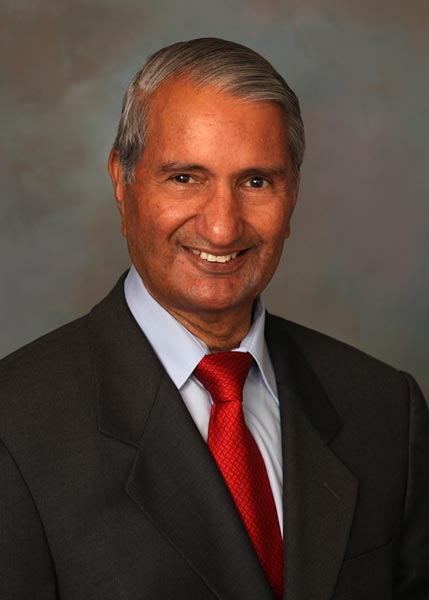Friend, mentor and an inspiration
My association with Dr MS Swaminathan goes back more than five decades. I first met him in 1971 when he’d come to visit the International Rice Research Institute (IRRI) in the Philippines where I was a scientist. It was, however, during his tenure as Director General of the IRRI from 1982-1988 that I got an opportunity to closely interact with him. I was already heading the Department of Plant Breeding when he joined the IRRI. Since his doctorate too was in the field of genetics, like me, he took personal interest in my rice research. We would often sit together and discuss how agricultural scientists and geneticists can help end food scarcity. During one of my interactions with him, he suggested, “Let’s work on improving the production of basmati rice.” At that time, basmati was quite popular but the yield was very poor. After his advice, I told my colleagues to focus the research on coming up with a high-yielding variety of basmati rice. Our research was a success. It led to India becoming the largest exporter of basmati rice in the world.
I’m lucky that I got a few opportunities to be a part of the meetings that included both leading agronomists, Dr Norman Borlaug and Dr Swaminathan. In those thought-provoking meetings, we looked at how the immense possibilities in our fields could be fully explored. Discussions would focus on which aspects needed more intensive research to improve the quantity and quality of the yield.
With Dr Swaminathan heading the IRRI, there was never an issue over the release of funds for research purposes. He never discouraged any scientist. From the seniormost scientist to the juniormost support staff, he brought out the best in everyone. He was humble to the core. His man-management skills were excellent. Never once in his six years at the rice institute did I see him losing patience. We were three to four Indian scientists working at the IRRI at that time and it was a matter of pride for us to be working under him. He was highly respected and loved by Filipino scientists as well as their government.
His major contribution in bringing about the Green Revolution in India lies in convincing the Indian government, especially leaders like C Subramaniam, besides Indira Gandhi, to import large quantities of high-yielding seed varieties of wheat and rice that could adapt themselves to Indian conditions. With the help of extension centres like Krishi Vigyan Kendras, besides agricultural colleges and universities in the country, he introduced the farmers to high-quality grains and seeds, besides better technology.
It generally takes four to five years for new seeds to reach farmers but with his able guidance and persistence, these high-yielding varieties reached the farmers within two to three years. From being food-deficit in the 1960s when the country was importing more than 10 million tonnes of foodgrains every year, India started producing 17 million tonnes. All this within a span of three years. More production and exports meant more income and prosperity for the farmers and a better standard of living.
The success of the Green Revolution also gave an impetus to the field of genetics and research initiatives in the country. He was successful in fulfilling his mission of making India not just self-sufficient in the production of foodgrains, but also creating a name for itself in the field of agricultural development.
It was a matter of pride and joy for us that our research was helping the world overcome food shortage.
Whenever I would come to India, I would go to Chennai to meet him. When I shared my autobiography with him, he told me to come to India to discuss it and hold seminars. This was just before Covid-19 came knocking. I missed the opportunity to meet him. Later, his health became fragile. In his death, the country has lost a great visionary and a leader par excellence. I have lost a friend and mentor. I will cherish forever the special bond we shared.
— The writer is a renowned geneticist and plant breeder
(As told to Seema Sachdeva)









